
Spanish shawl nudibranch, Flabellinopsis iodinea, Midriff Islands, Sea of Cortez.
Species: Spanish shawl nudibranch, Flabellinopsis iodinea
Location: Islas San Lorenzo, Baja California, Mexico
Image ID: 40475
Species: Spanish shawl nudibranch, Flabellinopsis iodinea
Location: Islas San Lorenzo, Baja California, Mexico
Image ID: 40475

SCUBA Divers at Night, Isla de la Guarda Island, aerial photo, Sea of Cortez. Dive boat Rocio del Mar is seen in the distance. Night diving is scary so I stay on the big boat and fly my drone.
Location: Isla Angel de la Guarda, Baja California, Mexico
Image ID: 40372
Location: Isla Angel de la Guarda, Baja California, Mexico
Image ID: 40372

Los Islotes, famous for its friendly colony of California sea lions, part of Archipelago Espiritu Santo, Sea of Cortez, Aerial Photo.
Location: Baja California, Mexico
Image ID: 32397
Location: Baja California, Mexico
Image ID: 32397

Isla San Francisquito, Aerial Photo, Sea of of Cortez.
Location: Isla San Francisquito, Baja California, Mexico
Image ID: 32441
Location: Isla San Francisquito, Baja California, Mexico
Image ID: 32441

Spanish shawl nudibranch, Flabellinopsis iodinea, Midriff Islands, Sea of Cortez.
Species: Spanish shawl nudibranch, Flabellinopsis iodinea
Location: Islas San Lorenzo, Baja California, Mexico
Image ID: 40471
Species: Spanish shawl nudibranch, Flabellinopsis iodinea
Location: Islas San Lorenzo, Baja California, Mexico
Image ID: 40471
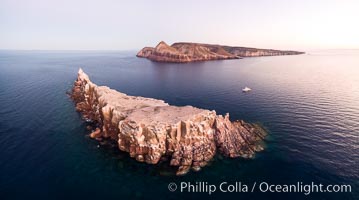
Los Islotes and Isla Partida, the northern part of Archipelago Espiritu Santo, Sea of Cortez, Aerial Photo. Islotes is famous for its friendly colony of California sea lions.
Location: Los Islotes, Baja California, Mexico
Image ID: 32402
Location: Los Islotes, Baja California, Mexico
Image ID: 32402

Two Divers in Huge Cavern, San Pedro Martir Island, Sea of Cortez.
Location: Isla San Pedro Martir, Sonora, Mexico
Image ID: 40389
Location: Isla San Pedro Martir, Sonora, Mexico
Image ID: 40389
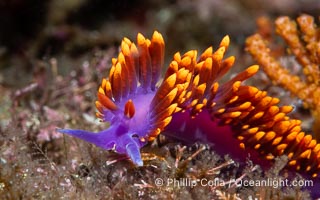
Spanish shawl nudibranch, Flabellinopsis iodinea, Midriff Islands, Sea of Cortez.
Species: Spanish shawl nudibranch, Flabellinopsis iodinea
Location: Islas San Lorenzo, Baja California, Mexico
Image ID: 40474
Species: Spanish shawl nudibranch, Flabellinopsis iodinea
Location: Islas San Lorenzo, Baja California, Mexico
Image ID: 40474

Los Islotes, famous for its friendly colony of California sea lions, part of Archipelago Espiritu Santo, Sea of Cortez, Aerial Photo.
Location: Los Islotes, Baja California, Mexico
Image ID: 32409
Location: Los Islotes, Baja California, Mexico
Image ID: 32409
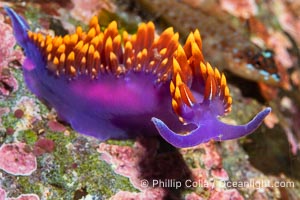
Spanish shawl nudibranch, Flabellinopsis iodinea, Midriff Islands, Sea of Cortez.
Species: Spanish shawl nudibranch, Flabellinopsis iodinea
Location: Islas San Lorenzo, Baja California, Mexico
Image ID: 40469
Species: Spanish shawl nudibranch, Flabellinopsis iodinea
Location: Islas San Lorenzo, Baja California, Mexico
Image ID: 40469
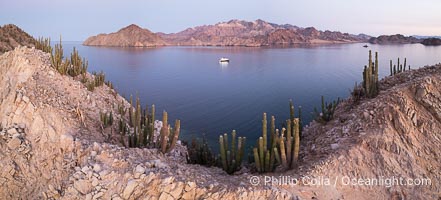
Cardon Cactus grow on Isla Angel de la Guarda at Sunset, Aerial Photo, Sea of Cortez, Mexico. Guardian Angel island is part of the Midriff Islands in Mexico's Sea of Cortez.
Species: Cardon cactus, Elephant cactus, Pachycereus pringlei
Location: Isla Angel de la Guarda, Baja California, Mexico
Image ID: 40340
Species: Cardon cactus, Elephant cactus, Pachycereus pringlei
Location: Isla Angel de la Guarda, Baja California, Mexico
Image ID: 40340

Isla San Pedro Martir at sunset with extensive forest of Cardon Cactus seen on the summit ridge of the island, aerial photo, Sea of Cortez, Mexico. San Pedro Martir Island and its marine life are, since 2002, part of the San Pedro Martir Biosphere Reserve, and is regarded as a natural laboratory of adaptive evolution, similar to that of the Galapagos Islands. It is home to 292 species of fauna and flora (both land-based and aquatic), with 42 species protected by Mexican law, and 30 listed on the Red List of Threatened Species. San Pedro Martir is also unique in the area for its year-round quantity of birds. The island is the only island in the area with a perpetually swirling cloud of sea birds. This is because the water around the island, has some of the most successful marine productivity in the world.
Location: Isla San Pedro Martir, Sonora, Mexico
Image ID: 40397
Location: Isla San Pedro Martir, Sonora, Mexico
Image ID: 40397

The blue-spotted jawfish is a species of jawfish native to the Gulf of California. It is an inhabitant of reefs where it is found in large colonies at depths of around 12 metres. This species hides in its burrow at night, completely sealing the entrance. Every morning, it rebuilds the burrow entrance.
Species: Blue-Spotted Jawfish, Opistognathus rosenblatti
Location: Isla Angel de la Guarda, Baja California, Mexico
Image ID: 40315
Species: Blue-Spotted Jawfish, Opistognathus rosenblatti
Location: Isla Angel de la Guarda, Baja California, Mexico
Image ID: 40315

Barberfish, Black-Nosed Butterflyfish, Johnrandallia nigrirostris, Isla de la Guarda, Sea of Cortez.
Species: Barberfish, Johnrandallia nigrirostris
Location: Isla Angel de la Guarda, Baja California, Mexico
Image ID: 40344
Species: Barberfish, Johnrandallia nigrirostris
Location: Isla Angel de la Guarda, Baja California, Mexico
Image ID: 40344
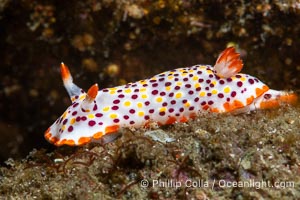
Norris' Chromodorid, Felimida norrisi, Sea of Cortez, Mexico.
Species: Norris' Chromodorid, Felimida norrisi
Location: Isla Angel de la Guarda, Baja California, Mexico
Image ID: 40356
Species: Norris' Chromodorid, Felimida norrisi
Location: Isla Angel de la Guarda, Baja California, Mexico
Image ID: 40356

Tambja eliora nudibranch, Sea of Cortez, Mexico.
Species: Blue-Striped Nudibranch, Tambja eliora
Location: Isla Angel de la Guarda, Baja California, Mexico
Image ID: 40360
Species: Blue-Striped Nudibranch, Tambja eliora
Location: Isla Angel de la Guarda, Baja California, Mexico
Image ID: 40360

Tambja eliora nudibranch, Sea of Cortez, Mexico.
Species: Blue-Striped Nudibranch, Tambja eliora
Location: Isla Angel de la Guarda, Baja California, Mexico
Image ID: 40362
Species: Blue-Striped Nudibranch, Tambja eliora
Location: Isla Angel de la Guarda, Baja California, Mexico
Image ID: 40362

Blue-banded goby in the Midriff Islands, Sea of Cortez, Mexico.
Species: Bluebanded goby, Lythrypnus dalli
Location: Isla Angel de la Guarda, Baja California, Mexico
Image ID: 40364
Species: Bluebanded goby, Lythrypnus dalli
Location: Isla Angel de la Guarda, Baja California, Mexico
Image ID: 40364

Pink Sponges Encrusting Rocky Reef alongside various species of algae and gorgonians, San Pedro Martir Island, Sea of Cortez.
Location: Isla San Pedro Martir, Sonora, Mexico
Image ID: 40374
Location: Isla San Pedro Martir, Sonora, Mexico
Image ID: 40374

Gorgonians on Lush Rocky Reef, San Pedro Martir Island, Sea of Cortez. Gorgonians are colonial filter feeders, spreading their branches into the currents flowing over the reef in order to gather passing bits of food.
Location: Isla San Pedro Martir, Sonora, Mexico
Image ID: 40408
Location: Isla San Pedro Martir, Sonora, Mexico
Image ID: 40408

Black Coral on Rocky Reef, Unidentified species, isla San Pedro Martir, Midriff Islands, Sea of Cortez, Mexico.
Location: Isla San Pedro Martir, Sonora, Mexico
Image ID: 40411
Location: Isla San Pedro Martir, Sonora, Mexico
Image ID: 40411

Gorgonians on Lush Rocky Reef, San Pedro Martir Island, Sea of Cortez. Gorgonians are colonial filter feeders, spreading their branches into the currents flowing over the reef in order to gather passing bits of food.
Location: Isla San Pedro Martir, Sonora, Mexico
Image ID: 40415
Location: Isla San Pedro Martir, Sonora, Mexico
Image ID: 40415

Barspot Cardinalfish, Apogon retrosell, Sea of Cortez.
Species: Barspot Cardinalfish, Apogon retrosell
Location: Islas San Lorenzo, Baja California, Mexico
Image ID: 40442
Species: Barspot Cardinalfish, Apogon retrosell
Location: Islas San Lorenzo, Baja California, Mexico
Image ID: 40442
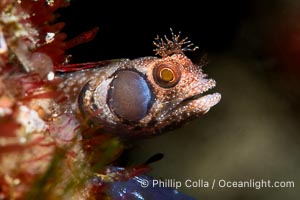
Acanthemblemaria crockeri, Brown-cheek barnacle-blenny, Islas San Lorenzo, Sea of Cortez.
Species: Brown-cheek barnacle-blenny, Acanthemblemaria crockeri
Location: Islas San Lorenzo, Baja California, Mexico
Image ID: 40444
Species: Brown-cheek barnacle-blenny, Acanthemblemaria crockeri
Location: Islas San Lorenzo, Baja California, Mexico
Image ID: 40444
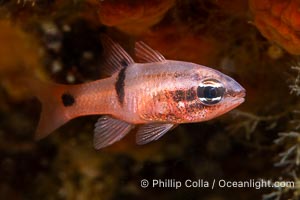
Barspot Cardinalfish, Apogon retrosell, Sea of Cortez.
Species: Barspot Cardinalfish, Apogon retrosell
Location: Islas San Lorenzo, Baja California, Mexico
Image ID: 40445
Species: Barspot Cardinalfish, Apogon retrosell
Location: Islas San Lorenzo, Baja California, Mexico
Image ID: 40445

Whale shark opens mouth wide to slurp clouds of mysid shrimp and krill, Rhincodon typus, Bahia de los Angeles, Sea of Cortez, Mexico.
Species: Whale shark, Rhincodon typus
Location: Bahia de los Angeles, Baja California, Mexico
Image ID: 40478
Species: Whale shark, Rhincodon typus
Location: Bahia de los Angeles, Baja California, Mexico
Image ID: 40478

Longnose hawkfish on black coral, underwater, Sea of Cortez, Baja California.
Species: Black coral, Longnose hawkfish, Antipatharia, Oxycirrhites typus
Location: Baja California, Mexico
Image ID: 33616
Species: Black coral, Longnose hawkfish, Antipatharia, Oxycirrhites typus
Location: Baja California, Mexico
Image ID: 33616

Cardon Cactus grow on Isla Angel de la Guarda at Sunset, Aerial Photo, Sea of Cortez, Mexico. Guardian Angel island is part of the Midriff Islands in Mexico's Sea of Cortez.
Species: Cardon cactus, Elephant cactus, Pachycereus pringlei
Location: Isla Angel de la Guarda, Baja California, Mexico
Image ID: 40338
Panorama dimensions: 4547 x 8842
Species: Cardon cactus, Elephant cactus, Pachycereus pringlei
Location: Isla Angel de la Guarda, Baja California, Mexico
Image ID: 40338
Panorama dimensions: 4547 x 8842
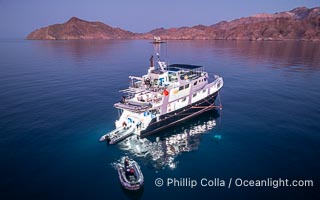
Dive boat Rocio del Mar anchored at Isla Angel de la Guarda at Sunset, Aerial Photo, Sea of Cortez, Mexico. Guardian Angel island is part of the Midriff Islands in Mexico's Sea of Cortez.
Location: Isla Angel de la Guarda, Baja California, Mexico
Image ID: 40370
Location: Isla Angel de la Guarda, Baja California, Mexico
Image ID: 40370

Aerial photo of Islas San Lorenzo in the Sea of Cortez. San Lorenzo Marine Archipelago National Park is a national park of Mexico located on San Lorenzo Island part of an archipelago in the Gulf of California off the eastern coast of Baja California. The San Lorenzo Archipelago is considered one of the most important ecological areas of the Gulf of California. The Island and surrounding areas are part of a rich ecosystem comprised by a grand variety of flora and marine fauna. This area is protected by the Mexican federal government Norma Oficial Mexicana because of its importance as a habitat for several endangered species.
Location: Islas San Lorenzo, Baja California, Mexico
Image ID: 40441
Location: Islas San Lorenzo, Baja California, Mexico
Image ID: 40441